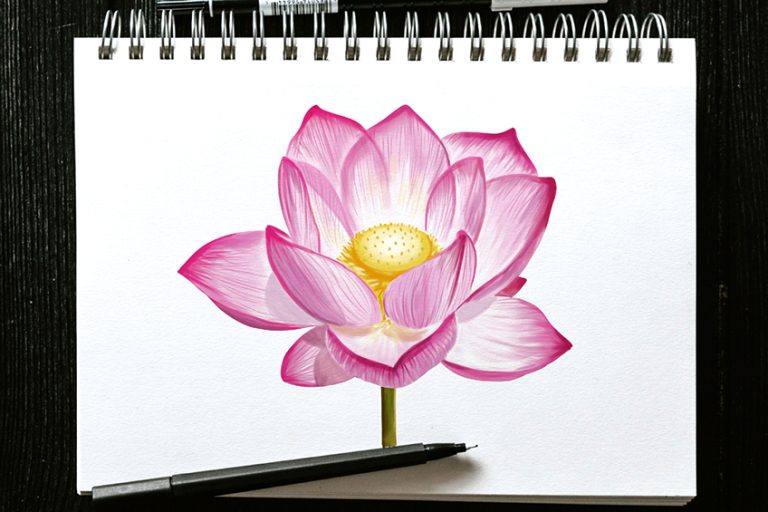Art Mediums – A Complete List of Different Art Mediums to Try
This post may contain affiliate links. We may earn a small commission from purchases made through them, at no additional cost to you.
If you are new to the world of art or perhaps just have not paid much attention to the terminology used by artists, you may find yourself asking questions like, “what is a medium in art?” and” what types of art mediums exist?” The art materials used by an artist to create majestic works of art are considered to be art mediums. This includes art supplies. Throughout this fantastic adventure of learning more about the different art mediums, we will have a look at a few popular art mediums used today, and supply a description of each so that, as a budding new artist, you won’t be left clueless about certain words and phrases, for example, artistic mediums can be described as an art form used to create a masterpiece. We hope you enjoy this colorful and detailed journey as you venture further.
Table of Contents
Elements of Art
Before we start on the exciting journey of learning about different art mediums, let’s get the tedious and technical stuff out of the way. Starting on any art journey, you will discover words for different techniques. Learning about the elements is necessary as these will assist you on your journey to becoming more proficient as an artist. Elements are the visual components that will be included in the picture you are creating and are listed as space, color, line, shape, form, and texture.
When creating an art piece, the different art mediums and the elements of art should go hand in hand to get the almost perfected artistic results you are looking for.
What Is a Medium in Art?
This is the material that an artist uses to create their artwork. The material can be paint, clay, wood, and fabric. Art mediums can also mean the creative materials artists use to create their masterpieces, such as glass and pottery. They are the materials used to create art, from acrylic paints to modeling clay. To answer the question of what is a medium of art, we would say that in a nutshell, it is everything artists will use in their hands to create art, such as drawing on paper or painting on fabric.
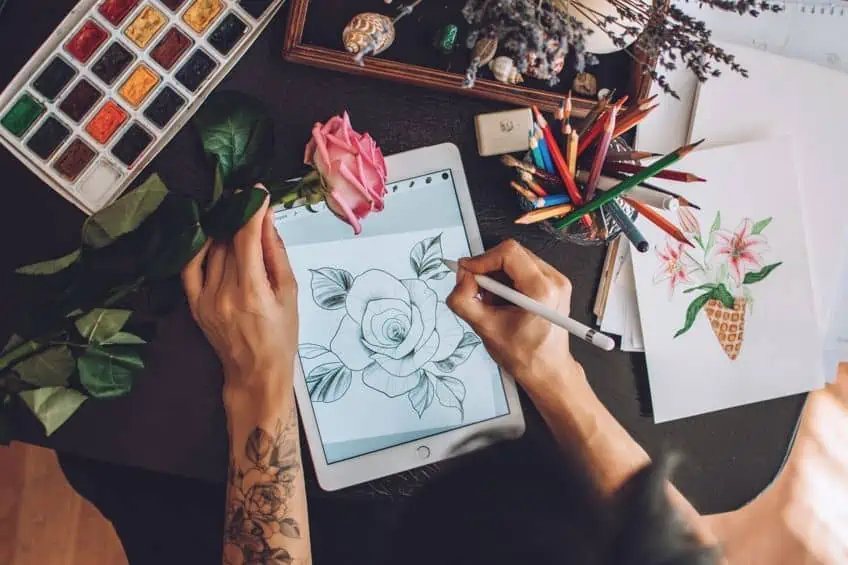
Art Mediums Vs. Art Techniques
What is a medium in art, and what is an art technique? Knowing the difference between an art medium and an art technique is essential. Art mediums are the different materials an artist uses to create art, such as oil paint or watercolors. The technique is the different ways an artist will use an art medium to create a work of art, such as etching and printing.
Popular Art Mediums
Colored Pencils, ink markers, watercolors, chalk pastels, acrylic paints, oil paints, oil pastels, and gouache paints, are a few items that are considered to be the more accessible art mediums that are readily available in art shops around the world. When using tempera paint, the application will last a long time without fading. Tempera paint dries very quickly. Using oil paints for your masterpiece would entail a longer drying time before you can carry on with your work.
Because the thickness of the paint can be manipulated, textures are easy to include in paintings with a variety of additional paint mediums.
Acrylic paints are very quick drying, and various textures can easily be created with this paint. Because it is so affordable, this is the perfect paint to use when introducing children to the world of art. Watercolors create a luminous color palette that appears to fade or bleed but is also quick drying.

Charcoal is an art medium available in almost all arts and crafts shops. When using charcoal, mistakes can be fixed quite easily by simply using an eraser. Chalk is also readily available and easy to use, and the colors that are available today are stunning. Graphite pencils are the ideal art medium for shading and outlining specific objects in a drawing. Pastels, just like graphite pencils, are great for shading and outlining. Color pencils are great for adding detail and color to any art piece, and ink or ink pens are the perfect art mediums for when you need to incorporate small detail in a picture and it’s great for outlining as well.
Various Art Mediums
Choosing the best art medium for you may be a bit confusing as there are so many to choose from, and unless you experiment with the art mediums that most appeal to you, you might just end up going from pillar to post. A suggestion is to try dabbling in a few of the different art mediums to see if any grab your interest straight away. Most art mediums are affordable, and by making up an art medium list of a few things to purchase every month, we are confident that you will soon find the one medium that speaks to you.
Don’t be surprised if you see you are drawn to more than one art medium, as once the inner artist comes out, there is no going back!
Bronze Work
Bronze was discovered and used as an art medium over four thousand years ago, and amongst sculptures, bronze remains one of the more popular metal artistic mediums. The bronze material is exceptionally strong and durable, and when a sculptor uses this material to make sculptures, a mold is usually made, and then the metal is cast. There are various ways to finish off a bronze sculpture. A chemical that will change the hue of the bronze is called gilding, which means covering a sculpture in gold leaf.
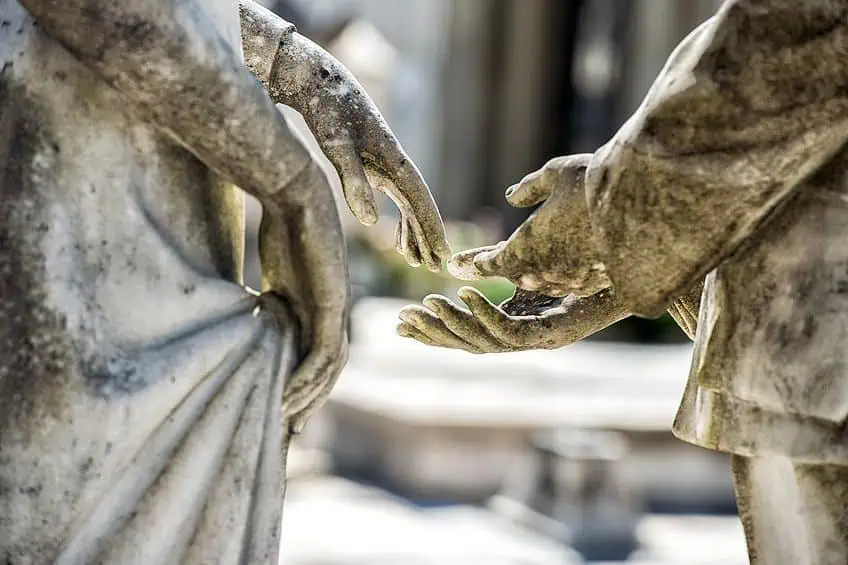
Acrylic Paint
Acrylic paint is without a doubt one of the more popular paints. It is used extensively in schools and is usually on most teachers’ art mediums list when shopping for art supplies for their pupils. It is widely available and is also affordable. More importantly, it is non-toxic, so most people tend to use this as one of the preferred art mediums when introducing young children to the world of art. The one drawback of acrylic paints is that it dries very quickly, so artwork has to be carefully thought out before painting can start because the drying time does not leave a lot of time for contemplation. When adding water to acrylic paint, you will have a much runny type of paint and by the same token by adding gel to the paint, it will be a thicker consistency.
Using thicker paint on canvas to create almost a 3D effect has become more popular around the world for bespoke art pieces in the home. Cleaning acrylic paints off paintbrushes is effortless, and only water is needed.
Watercolor Paint
Unlike acrylic paint, watercolor paints are almost transparent when painted onto a surface. Watercolor paints are sold in tubes where the pigment has been concentrated. Most painters who work with watercolors usually mix the colors with water to get the shades that they are looking for. When painting with watercolors, often a large paintbrush will be used to paint landscapes and smaller brushes for the finer details in a picture. Did you know that art supply stores sell watercolor markers? These are markers that can be used hand in hand when painting with watercolor paints.
The markers contain water-soluble ink, and they are used to draw on the canvas before painting. Once you have used the marker, simply paint over it with the paint, and you will notice how this also enhances the detail of a finished watercolor painting.

Probably, the strangest thing about watercolor paint that you may not know, is that there is no white color. This effectively means that if you need the white color to be in your picture, the background of the canvas or surface that you are painting will have to act as the white color as it peeps through the painting. It may sound difficult, but remember watercolors become very faded when painted onto canvas so it is achievable with a lot of practice of course.
Oil Paint
Pigments suspended in a drying oil are used to make oil paints. The more common oil used to suspend the pigment is linseed oil. When an artist starts a painting with oil paints, it is important to know that the finished product will take a longer time to dry, but the most significant advantage is that the artist will be able to take much longer to finish a piece of artwork without worrying that it will dry before the painting is finished. Oil paints do not mix with water at all. In order to “water down” oil paints, linseed oil or turpentine can be mixed into the paint. Oil paintings usually have a beautiful texture to them, and textures can quickly be built up by adding more layers of paint over each other.
Imagine a gorgeous rock formation painted in oil paints where the rocks are layered and almost flow into each other, this is the effect you will get when using oils as a preferred medium in art.
Gouache Paint
This art medium leaves a matt finish which makes it the perfect art medium for illustrations. The matt finish ensures no reflection on a finished picture, such as the reflection you would get when working with graphite. Gouache is almost the same as watercolors except that gouache paint carries a higher pigment than watercolors. Gouache also has fillers that are added to the pigment, which can create a white color. When painting with gouache paint, it has the same quality as watercolor paint. When diluted with water, the colors do become quite dull.
Gouache can also be used as a thicker type of paint if you don’t dilute it, and you can paint straight from the bottle or tube.
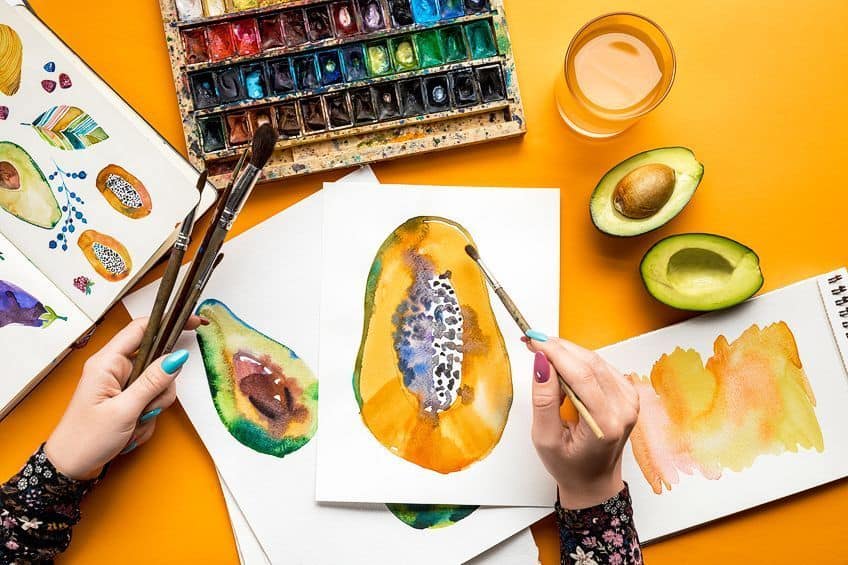
Silverpoint
Silverpoint is where fine lines are drawn on paper using a thin piece of silver. Silverpoint can be considered as one of the more different art mediums, and if used correctly, it creates masterpieces that cannot be copied. To master this art is very complicated and can take years of practice to use it correctly and effectively. The process of working in this medium of art is painstakingly slow as lines are drawn individually, and because the lines are being done separately, each line has to be almost perfect in its placement. If considering working with silverpoint, the quality of the paper is important because if the paper is too thin, the silver can damage the paper.
The paper also needs to have a smooth finish for delicate lines to be drawn without interruption.
Glass Work
This type of art can be seen in churches where stained glass windows have been built into the structure of the church. Glass has become one of the more popular types of mediums in that it is now being used to create jewelry, bespoke wine bottles, and even sculptures. Glass, however, is a challenging art medium to work with.
Just like wood carving, it can take years to perfect because if a mistake is made when working with this medium, it cannot be fixed and could end up being quite costly.
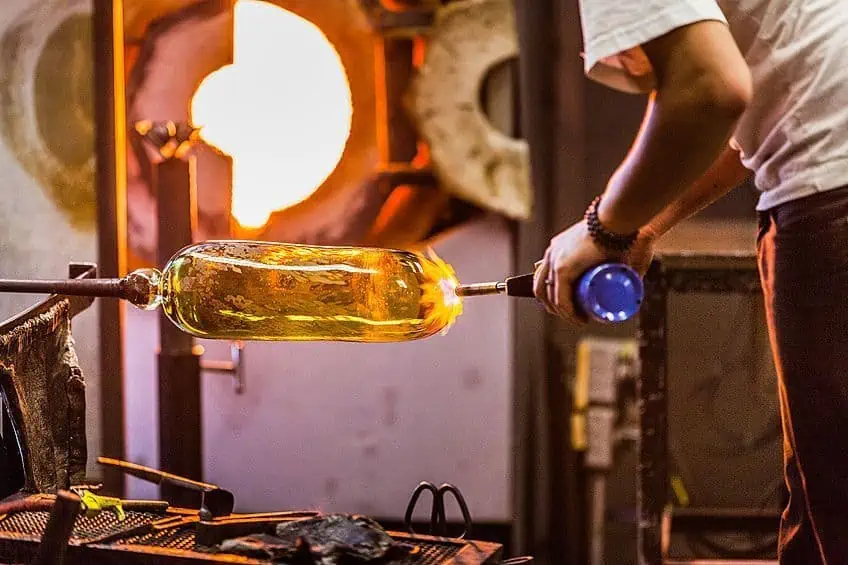
There are not a lot of glass experts around the world and if you are interested in glass as being one of your preferred artistic mediums, finding an expert who would be willing to teach and mentor you would be the best route to take. This art is certainly not something that you can dabble in without expert knowledge or guidance, but having said that, working with glass is one of the more spectacular artistic mediums and is worth the while if wanting to pursue it as a career.
Ink
Ink is incredibly versatile, and there are several ways it can be used. Ink is used in pens, on a brush, or in an airbrush. Adding water to ink will create different effects in a picture. Two types of ink are available, namely dye-based or pigment-based. The dye-based ink is made up of dyes that dissolve, and the pigment-based inks are made from finely ground pigments. Using ink means you are thinking about printing or drawing and perhaps even painting. Calligraphy is an art form that is created with ink. Graphic artists and illustrators also use Copic Markers, which are made from a mixture of oil, dye, and alcohol.
Ink is extremely difficult to remove as it is a permanent liquid that dries very quickly.
When using ink as one of your preferred art mediums, the surface that is used to draw on is the most important part of this art type. As a suggestion, try using Bristol board as the ink will not bleed through as it might on fabric or white paper. Marking pens contain ink in them and are usually one of the very first objects that are placed in a child’s hands to start writing with. The press on the paper does not have to be heavy, and the colors are bright, which appeals to all age groups.
Tempera Paint
This paint dries exceptionally quickly, so smaller paintings are the order of the day when using it. The paint is made from a pigment that has been mixed with a water-soluble binder. Can you guess what this binder is? Surprisingly, it is the yolk of an egg. By adding an egg yolk to the paint, the paint will give off a yellow hue when painted onto canvas.

Graphite
This is by far one of the more popular art mediums in the art world today. Beautiful and realistic drawings can be drawn using graphite, and it is not as dark as charcoal but instead leaves a gray finish when completed, so it appears softer than a dark charcoal drawing. Graphite is available in soft and hard levels. The softer the graphite, the darker the drawing will be, and the harder the graphite, the lighter it will be. To shade with graphite is an absolute pleasure because light and dark shading are easy to achieve simply by adjusting the pressure on the paper. Charcoal drawings usually have a matt look when finished whereas graphite has a shiny finish.
A good quality eraser will fix any mistakes made when using graphite.
Clay Modelling
Artists who choose clay modeling are indeed lucky as they get to create beauty with both hands and of course their imagination. Modeling clay is especially great for beginners as it teaches how to mold and create at the same time. The best thing about clay is that it is exceptionally therapeutic to dig your fingers into an earthy substance.
Tools such as knives and wire brushes are used for the sculpting of clay, and usually, an oven or clay kiln is needed to finish off the art piece.
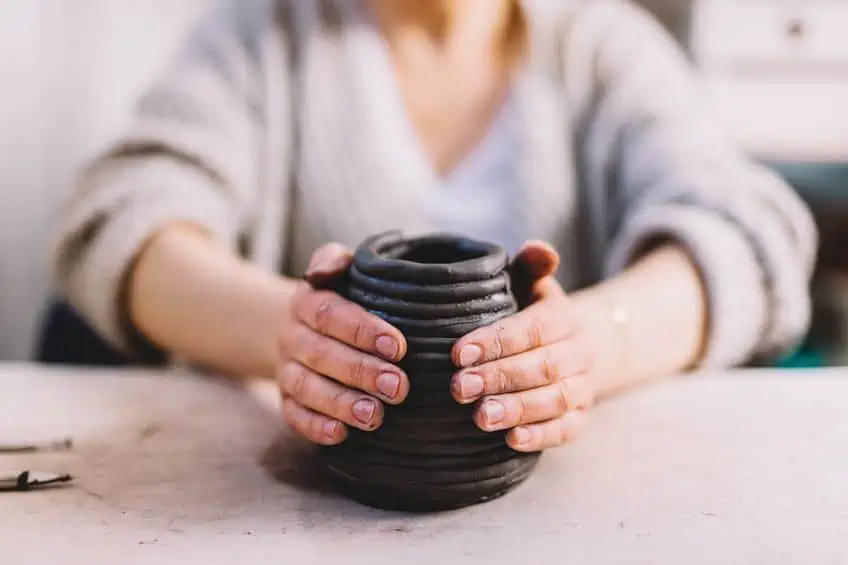
Kiln temperatures can run up to 1200 degrees Celsius to bake the art piece. Incorporating different pieces of colored glass into the clay sculpture will give a delightful effect to the piece. Not many people have the privilege of owning a kiln. If you choose clay modeling as a medium, you will have to attend lessons because using a conventional oven is not advisable and will certainly not do the trick to get the final result you are looking for.
Watercolor Pencils
These pencils are made from a pigment that is bound together with the same substance you will find in ordinary watercolor paints; the only difference is that the paint in the pencil is sold in a dry form which ultimately is the core of the pencil. Just like watercolor paints, they need to be mixed with water to activate them. For those artists who are nervous about holding a paintbrush or who might not have a steady hand, the watercolor pencil is the perfect tool. There is undoubtedly more control when holding a pencil compared to holding a paintbrush, and the bonus is that a drawing can be enhanced with paint afterward to enhance the picture. It also gives the artist more chances of painting something without too much waste. If you want to look at this medium to start your journey as an artist, choosing the correct surface is just as vital as choosing your colors. The paper you are going to use must be of the highest quality and must also be waterproof because it will have to withstand water on it.
The last thing you want is a piece of paper that is going to buckle. The best thing about watercolor pencils is that they have a dual purpose and can also be used as standard colored pencils as well as paint.
Wood Art
Wood is highly versatile and can be used to create beautiful sculptures as well as carvings. It is a skill that takes a long time to perfect, and imagination is what will help with this creative journey. With wood art, there are no rules to this art form. As long as you have the right tools and equipment, the world of creating is at your fingertips.
Artworks Created by Famous Artists
In the history of art, we learn how famous painters loved creating with specific mediums. A few of the more famous artists and their different types of art mediums are mentioned below. These include Michelangelo, Da Vinci, and Picasso. These are truly inspirational artists, and art students all over the world are still studying their masterpieces in fine detail.
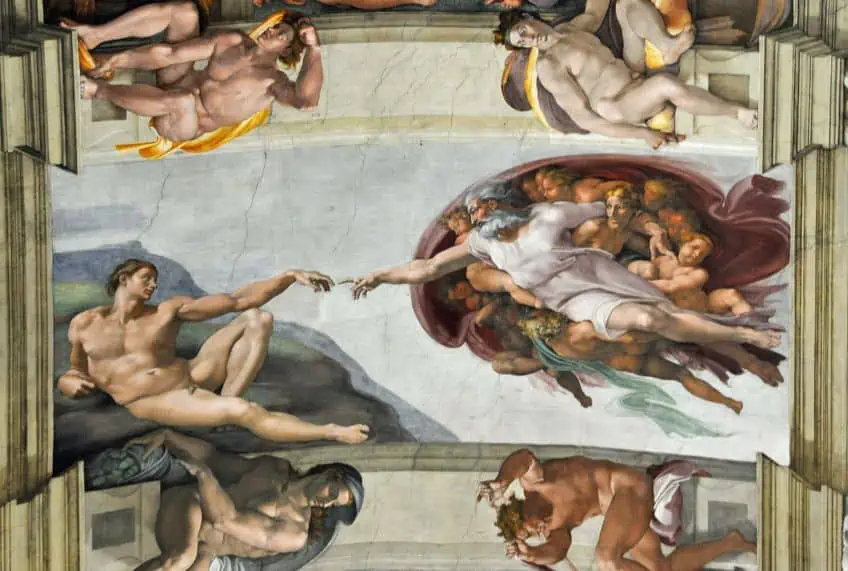 The Sistine Chapel ceiling (1512) by Michelangelo di Lodovico Buonarroti Simoni; Dennis Jarvis from Halifax, Canada, CC BY-SA 2.0, via Wikimedia Commons
The Sistine Chapel ceiling (1512) by Michelangelo di Lodovico Buonarroti Simoni; Dennis Jarvis from Halifax, Canada, CC BY-SA 2.0, via Wikimedia Commons
The Sistine Chapel ceiling (1512) by Michelangelo di Lodovico Buonarroti Simoni
| Artist | Michelangelo (1475 -1564) |
| Date Completed | 1512 |
| Medium | Fresco |
| Location | Apostolic Palace, Vatican City |
A lot of people are under the impression that the Sistine Chapel ceiling was painted by Michelangelo using a range of different art mediums, however, he used a technique called “Fresco”. This is a technique where the paint is applied to wet plaster to create a texture or an illusion of depth. Fresco was used by many Italian painters from that era. True fresco can be referred to as when a pigment is mixed with water and is then painted directly onto a surface where the surface has been prepared with a layer of damp lime plaster. The pigment mixed with water binds to the plaster, and with a chemical change, the fresh lime will change to calcium carbonate after it dries. The most fascinating thing about the Sistine Chapel is that Michelangelo did not know how to use the Fresco technique. He had to teach himself how to mix it and work with it before he attempted to paint the ceiling.
This goes to show that experimenting with one or two art mediums before choosing the one that works for you is a wise decision. The Fresco technique is very old-fashioned and is very difficult to learn and as a result, has almost faded away.
The Head of a Woman (1485) by Leonardo da Vinci
| Artist | Leonardo da Vinci (1452 – 1519) |
| Date Completed | 1485 |
| Medium | Silverpoint on paper |
| Location | Palazzo Reale di Torino, Turin, Italy |
The Head of a Woman is one of Leonardo da Vinci’s most famous masterpieces. The medium of art used by Da Vinci to create this masterpiece is called silverpoint drawing. This is one of the more traditional art mediums and has been around for centuries.
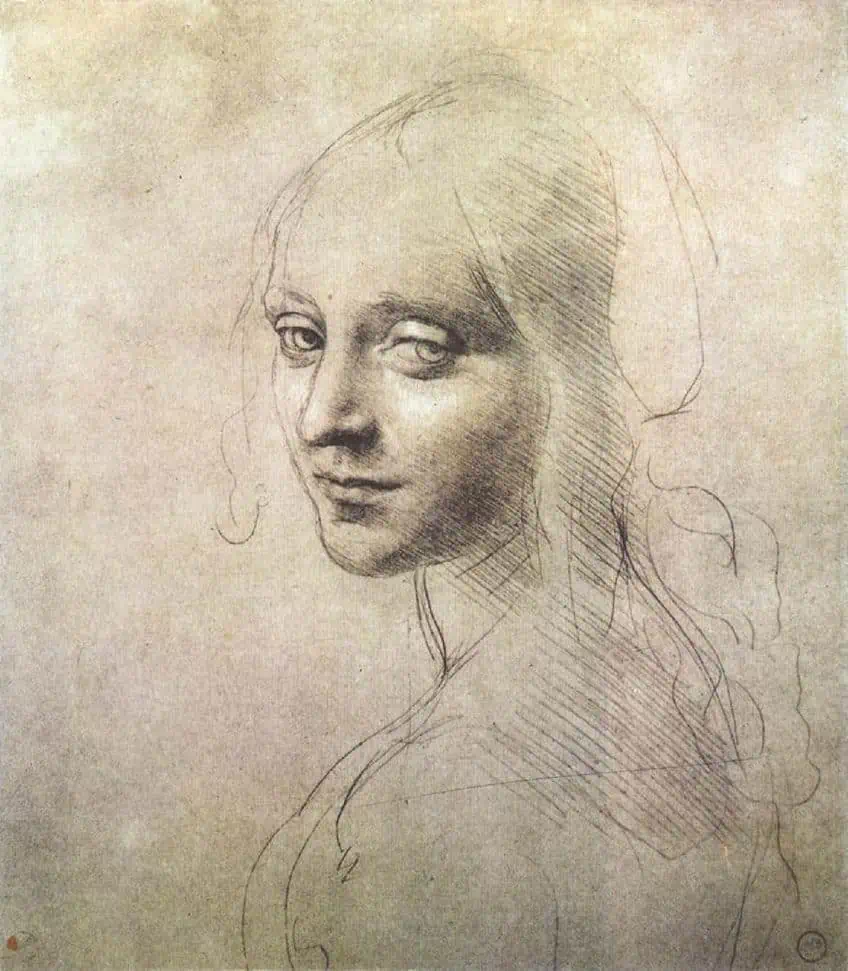 The Head of a Woman (1485) by Leonardo da Vinci; Leonardo da Vinci, Public domain, via Wikimedia Commons
The Head of a Woman (1485) by Leonardo da Vinci; Leonardo da Vinci, Public domain, via Wikimedia Commons
Glass of Absinthe (1914) by Pablo Picasso
| Artist | Pablo Picasso (1881 -1973) |
| Date Completed | 1914 |
| Medium | Bronze, oils, and glass |
| Location | Museum of Modern Art, New York, United States |
In this particular artwork, Pablo Picasso used different art mediums called mixed art media, where more than one art medium is incorporated into a painting, sculpture, or drawing. The Glass of Absinthe contains a real absinthe spoon which sits between a modeled bronze sugar cube and glass.
When questioned about the mixed art media, Picasso said he wanted to see if the spoon and modeled glass would complement each other in art but added that he thought they clashed.
David (1504) Michelangelo di Lodovico Buonarroti Simoni
| Artist | Michelangelo (1475 -1564) |
| Date Completed | 1504 |
| Medium | Marble |
| Location | Accademia Gallery, Florence, Italy |
This famous statue of David was created by Michelangelo in 1504. The artistic art medium used for this famous statue was marble. It took four years for Michelangelo to complete the statue of David, and replicas of this same statue have been erected all over the world with different types of art mediums.
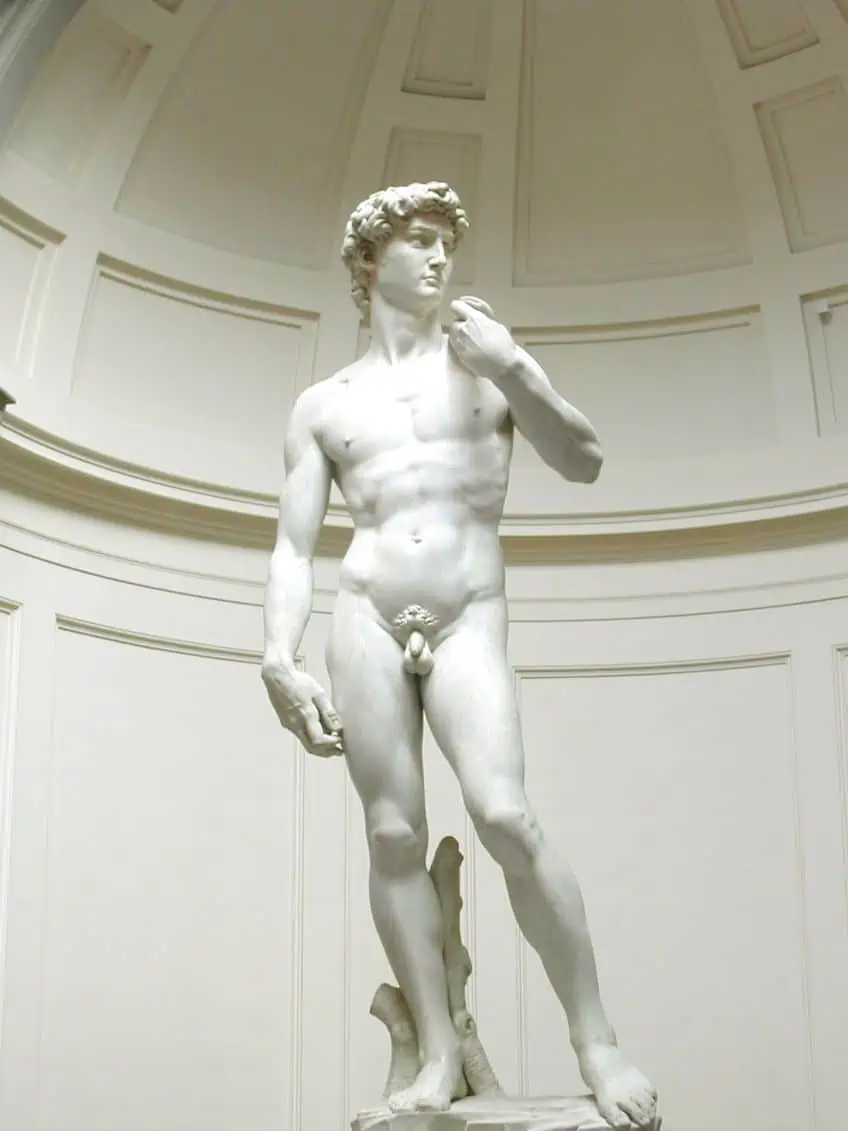 David (1504) Michelangelo di Lodovico Buonarroti Simoni; David Gaya, CC BY-SA 3.0, via Wikimedia Commons
David (1504) Michelangelo di Lodovico Buonarroti Simoni; David Gaya, CC BY-SA 3.0, via Wikimedia Commons
Unusual Art Mediums
Clothing designing and musical compositions will fall under the medium art definitions heading. If you look at a typical artist that draws pictures, the pencil is what is used to create and the graphite in the pencil is the material the artist needs to complete their work. In music, the composer uses a musical instrument to create their art, and a graphic designer uses a computer. We live in a world that is full of brightness and surprises, and when we talk about the different types of art mediums, our attention always seems to zero in on painting and drawing. However, art mediums cover a broad spectrum of art!
When we try to sum up the different art mediums that are available, they just cannot all be covered in one article. Therefore, we will mention a few of the other art mediums that you may find interesting.
Architecture
In architecture, the architect uses building materials to create, and this will include a list of mortar, cement, and concrete. Wood, brick, stone, metal, and glass will also feature as the art mediums for the architect. Even though the architect does not touch or use the actual materials to create the final masterpiece, the materials or tools are the materials the designs are based upon.
 Barcelona Park Güell (1900) by Antonio Gaudí; Txllxt TxllxT, CC BY-SA 4.0, via Wikimedia Commons
Barcelona Park Güell (1900) by Antonio Gaudí; Txllxt TxllxT, CC BY-SA 4.0, via Wikimedia Commons
Filmmaking
The art of filmmaking is undoubtedly one of the more lucrative industries that most people want to explore. The art covers a broad spectrum of art mediums, and animation has become, without a doubt, the most popular form of art design in this industry. Movie making is considered to be the art medium of communication.
Carpentry
In carpentry, the carpenter uses timber and various types of glue to create masterpieces. Carpentry is specialized and one of the different art mediums that are becoming more popular amongst artists that are interested in design and working with natural materials.
Textiles, such as cotton, wool, yarn, and silk are the materials used to make clothes, blankets, scarves, curtains, and even macrame pieces for the home.
Food
Food as an art medium has taken the world by storm, especially with so many cooking shows on television. Chefs are required to create art using tools such as stoves, ovens, and grills. Food is an artistic medium that has attracted many young people to explore in the hopes of becoming world-famous chefs.
Ceramics
Ceramics is an art medium where different types of clay are used to create finished products. When an artist uses ceramics, a variety of products are used such as terracotta and glaze. Creating ceramics has become very popular for those who are thinking about starting a business from home. It can be self-taught and can become a lucrative well-paying job.
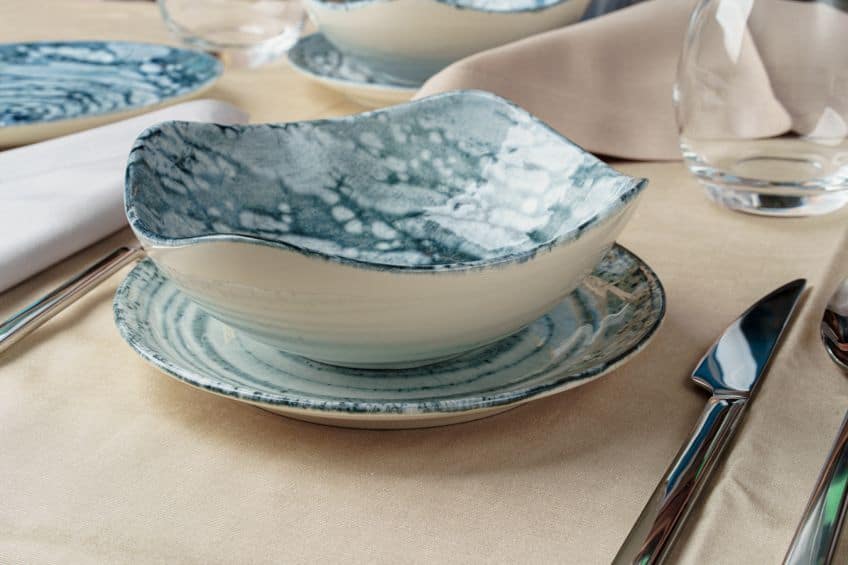
Digital Art
Digital art is a combination of software and graphics. An artist will use various drawing techniques to create 2D pieces in digital software. Digital art mediums have become very popular since computers were first introduced to the world, and many young people are finding that this particular art is allowing them to become almost famous overnight.
Photography
Photography is deemed to be one of the more popular art mediums that are relatively easy to try and can be self-taught. As with painting, practice eventually leads to success. The photographer creates art mediums such as photographic film and digital sensors.
The photograph uses a lens and needs light to create masterpieces.
Rarely Used Art Mediums
In today’s world, almost anything can be used to create art. It all depends on what the artist’s message is and how they are trying to get the public to buy into the message. A perfect example of this is the now infamous meat outfit worn by Lady Gaga at an awards show. This outfit created shock and dismay, yet at the same time, still, for years afterward, we talk about the outfit. We may not know what the message was that was being portrayed, but the outfit will stay in our minds for quite some time.
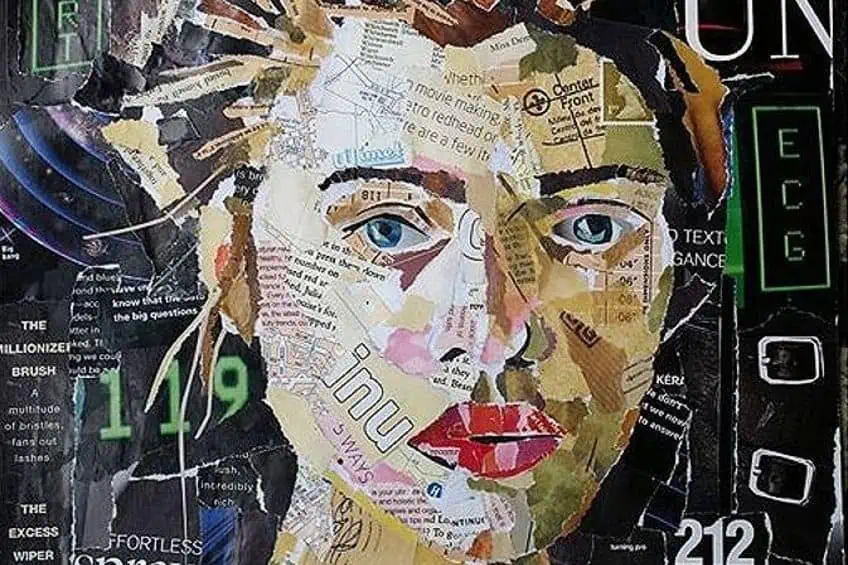
Some other strange or unusual art mediums that fall under this umbrella are elephant dung, rust, coffee, even tomato, soy sauce, and believe it or not, blood! As you can see, almost anything can be an art medium! Many of these are mediums that are used to capture attention or add shock value to the final product. Well, all we can say is they have our attention!
When handing a pencil or paintbrush to a child for the first time, very rarely do we think about medium art definitions. The brush is simply placed into a child’s hand to allow them to create. Knowing more about the subject is always beneficial because art can be used not only as a way to occupy a child, it could very well be the start of a thriving and lucrative business. Learning about the different art mediums will always put you ahead of the queue when making your dreams a reality. All that is left is to wish you good luck on your art adventure.
Frequently Asked Questions
What Is a Medium in Art?
The simple answer to this question is easy. When we use the so-called medium in art term, it can either refer to the materials that an artist uses to create masterpieces, such as paint, clay, charcoal, wood, or even fabric, and at the same token, it also refers to the technique that an artist will use to create their pieces, such as sculpting, painting with oils, painting with watercolors, printing, and even pottery.
What Are Different Art Mediums?
The different art mediums are described as the actual material that an artist uses to express emotion on a surface. When we talk about other art mediums, we are talking about acrylic paint, graphite pencils, oil paint, charcoal, watercolor paint, and both oil and chalk pastels. So basically, it is the material that you put in your hand to create the art that you want.
What Is an Artistic Medium?
When we talk about the artistic medium, we refer to the work of art produced by an artist. In art galleries, you will often see a description of the material or the artistic medium used by an artist. It is usual to see an artist’s name displayed on the art piece. It will have the name of the artist and the artistic medium used, such as oil on canvas or watercolor. If a sculpture is on display, you will see the artistic medium referring to clay or steel, or wood as the artistic medium used.
Which Art Mediums Are Used for Painting?
Acrylic, ink, oil, gouache, and watercolor paints are the most popular paints that are art mediums for painting. These are by far the most versatile products, and because of their popularity, they are easy to come by. Artists are drawn to the world of painting mainly because of these art mediums. The different art mediums used in other art, apart from painting, are graphite pencils, pastels, and charcoal.





